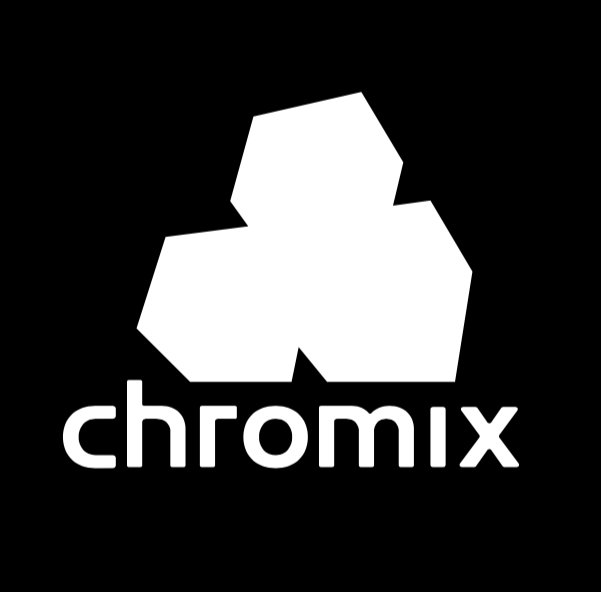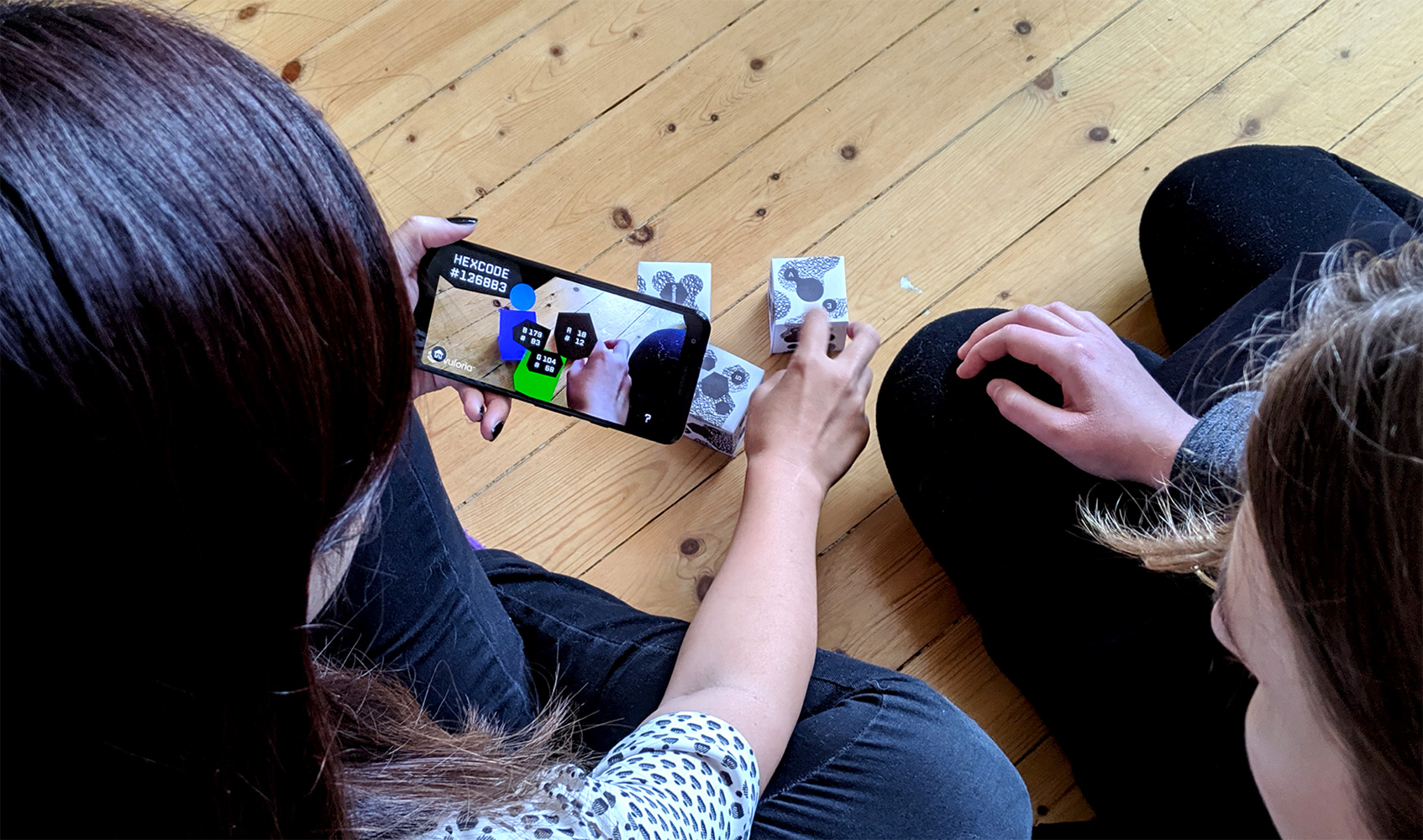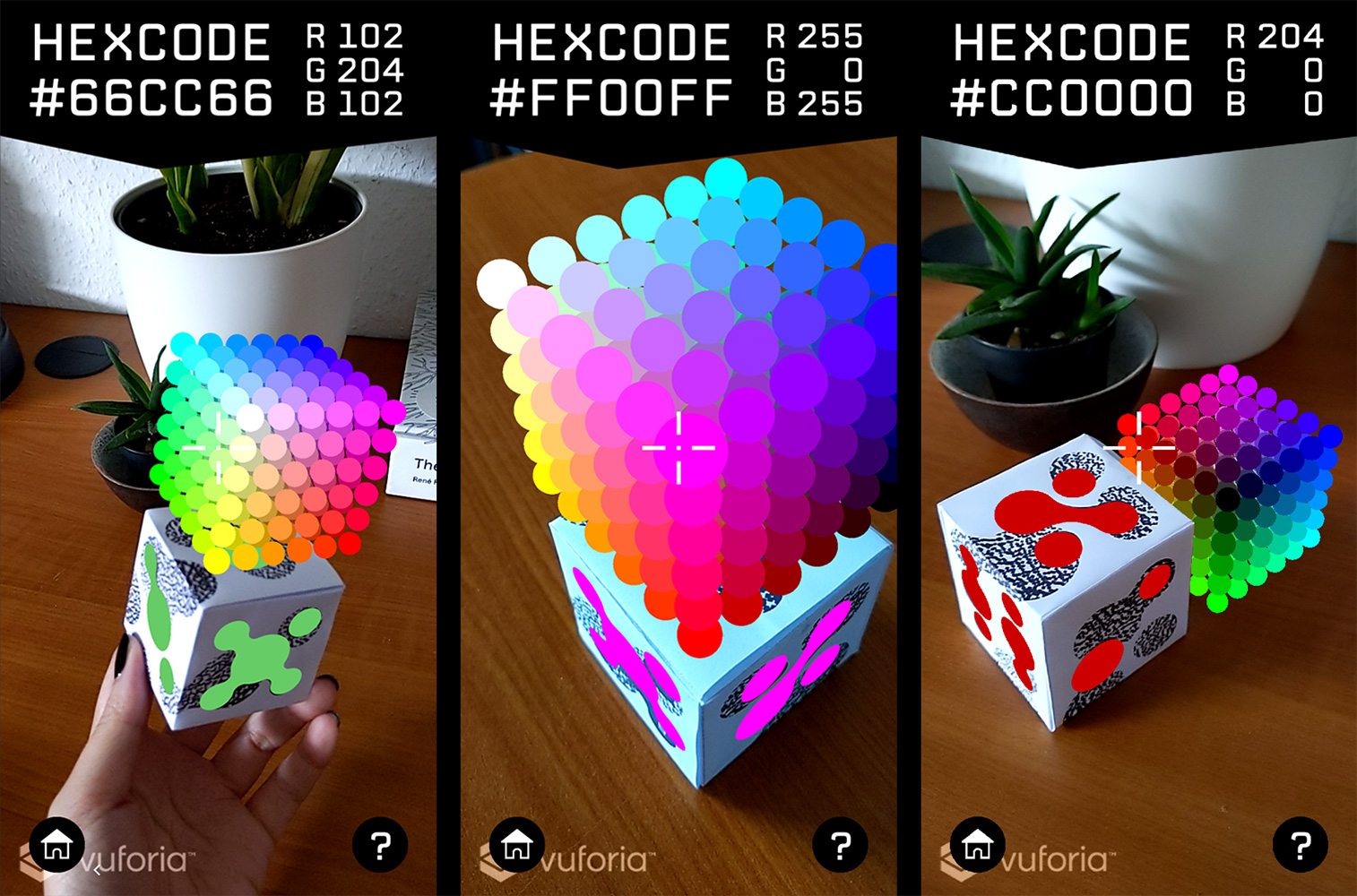

CHROMIX
2020 / INTERACTION DESIGN
Chromix is an augmented reality app about color theory that users can control with three paper cubes. The haptic and three-dimensional interaction with the cubes helps users with their learning experience. Other than a smartphone and paper users don't need anything else to use the app.
Chromix was built with Unity and Vuforia.
In cooperation with Elisaveta Liubcenco.
Link to presentation (german)


